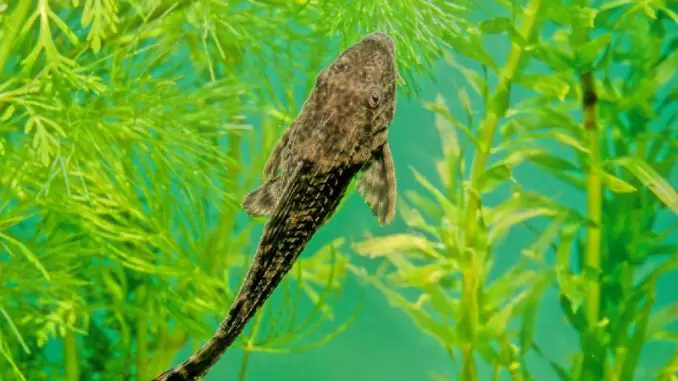
Rubber lip plecos, or scientifically known as Chaetostoma milesi, is a freshwater fish that fishkeepers have often mistaken for the bristlenose pleco. Although these fish are very similar, there are some distinct differences, especially when it comes to caring for them.
Hobbyist fish keepers don’t know much about the rubber lip pleco due to it being one of the less popular pleco’s. That is why I have chosen to teach you the most important things to remember when it comes to caring for these freshwater fish.
This article should help you decide whether the rubber lip pleco is the right fish for your aquarium. You will learn about its breeding habits, dietary needs, personality and tank mate compatibility, and much more. I hope you find this post helpful!
TABLE OF CONTENTS
Rubber Lip Pleco Facts & Overview
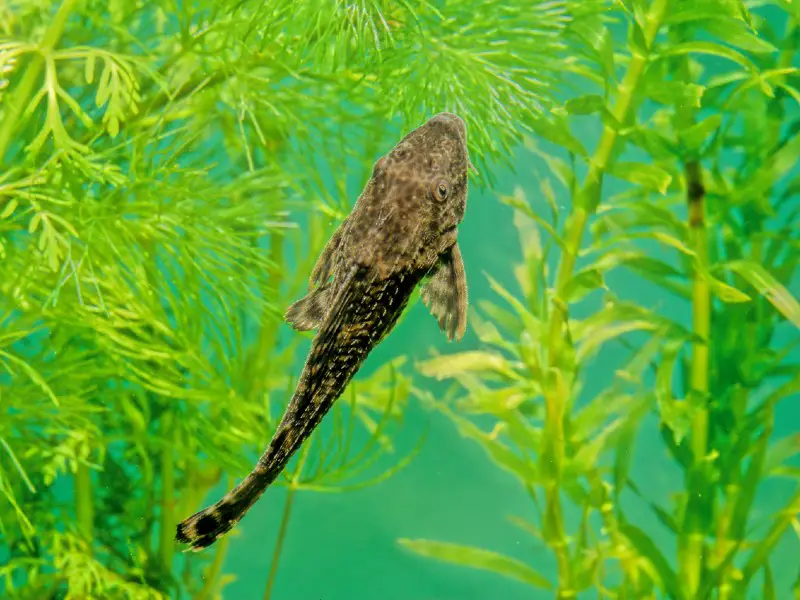
| Category | Rating |
| Care Level: | Easy |
| Temperament: | Peaceful but very territorial |
| Color Form: | Grey with black spots or stripes |
| Lifespan: | Up to 12 years |
| Size: | 7 inches |
| Diet: | Scavenging omnivore |
| Family: | Loricariidae |
| Minimum Tank Size: | 30 gallons |
| Tank Set-Up: | Freshwater |
| Compatibility: | Becomes very territorial and antisocial as it gets older |
This South American fish is known mostly by the name rubber lip pleco, but you might have heard it being called the rubber lipped pleco or the rubber nose pleco.
The rubber lip pleco is a very hardy and tolerant fish. Its water goes through multiple temperature changes, water level changes, and other parameters that change drastically throughout the rainy season, so they can take a bit of diversity in your fish tank.
Rubber lip pleco is mainly found in the Magdalena River in Columbia and in the Apure River in Venezuela. You might also catch the sight of a few groups of fish in the rivers connecting the two together.
This is a bottom-feeding fish, which means that they are found near the substrate of the river and aquarium in both the wild and in captivity. Their diet is mostly made up of algae, and they generally graze on their food throughout the day.
You can purchase rubber lip plecos online and in aquarium stores for between $7 and $10 dollars. Their low price is another reason for opting for this peaceful freshwater fish.
Typical Behavior
If there is trouble in your fish tank, it certainly hasn’t got anything to do with the rubber lip pleco! Rubber lip plecos are extremely peaceful and tend to keep to themselves.
Plecos do become extremely territorial and unsociable as they get older, which is to be expected, is it not? These fish are quite happy sucking on the side of your aquarium or nibbling bits of algae on the substrate all day long.
Children particularly love seeing these fish in the aquarium, and the fish don’t seem to mind having kids get up close and personal with the fish tank; another reason for bringing them into your home.
Anyone looking for a speedy fish that will perform and put on a show may be disappointed in this fish. It may be slow and sluggish, but it certainly isn’t boring.
Appearance
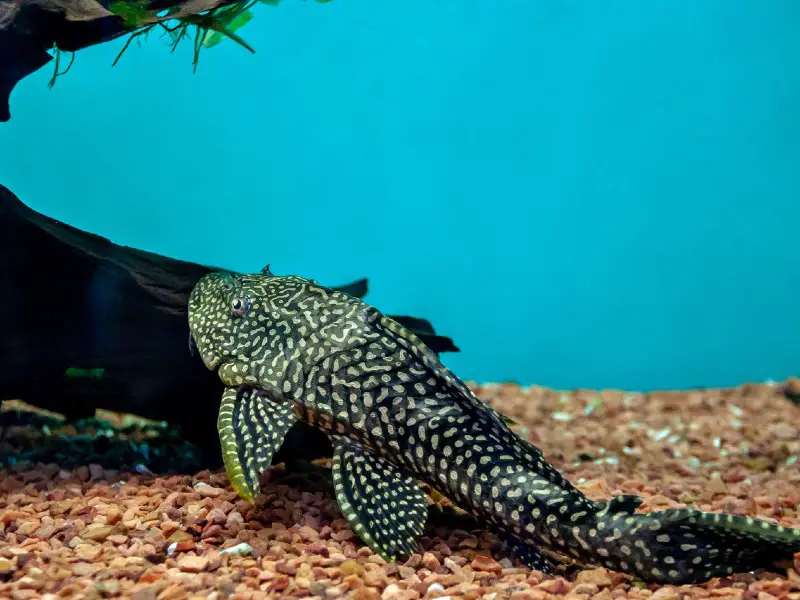 It comes as no surprise to us as to where the rubber lip pleco got its name from. It has full, rubbery lips and that protrudes out of its face with five hooked cheek spines, eight dorsal rays, and five anal rays.
It comes as no surprise to us as to where the rubber lip pleco got its name from. It has full, rubbery lips and that protrudes out of its face with five hooked cheek spines, eight dorsal rays, and five anal rays.
It is a soft grey color that may look slightly green or blue in certain aquarium lighting, with black spots or stripes covering its body. Pleco characteristics vary throughout the species, and no two plecos look exactly the same, which certainly adds to their quirkiness.
Habitat and Tank Conditions
This is where the fun part begins. It can be incredibly frustrating finding compatible fish that can all share a tank with one another, but that won’t be the case with the rubber lip pleco.
You can have a play around with the aquarium conditions as these fish are very tolerant and easy to care for. They are perfect tank mates for fussier fish that are hard to pair up.
Tank Conditions
Make sure that the tank stays within the following parameters:
- Water temperature: 72°F to 80°F
- pH levels: 6.5 to 8
- Water hardness: 8 to 12 KH
You should get into the habit of testing the water weekly to make sure it is sitting within these guidelines. Doing this weekly using a high-quality water testing kit is important because it is quite easy to forget about the needs of laid-back fish such as these.
You should have plenty of plants and vegetation in a rubber lip pleco fish tank. Underwater plants in their natural habitat surround these fish, so recreating this is very important for keeping them happy and healthy.
Don’t forget that these species are natural scavengers with a strong instinct to explore. Adding large rocks, driftwood, and other accessories and decorations for the fish to investigate is a very good idea.
Finally, don’t forget about setting up hiding spaces and resting areas for your pleco. Adding hiding spaces will help your fish feel safe and secure as they don’t like bare tanks or open spaces.
What Size Aquarium do they need?
I recommend placing rubber lip pleco in a 30-gallon fish tank, but you might have read about fish keepers that have kept their pleco in a 15-gallon tank and had them live happily ever after. Although these fish are on the smaller side and don’t move about too much, I suppose you could keep them in a smaller tank, but you may not have room for their creature comforts, which makes a huge difference to their quality of life.
A 30-gallon fish tank is perfect for rubber lip pleco as it allows you to add multiple species of plants, little hiding spaces, and some rocks and logs. If you want your fish to reach their maximum lifespan, you need to make their tank comfortable to stop them from becoming distressed and depressed.
Alternatively, if you are thinking of getting just one fish and placing it into a 15-gallon fish tank, you probably will have enough space for the necessary plants and decorations that will keep your pleco happy. This leads us to the next point of how many rubber lip pleco can be kept per gallon.
How Many Can be Kept Per Gallon?
If you have juvenile fish, there is a little more flexibility in how many fish you can keep in the aquarium per gallon. Young fish are fine in a small aquarium during the beginning of their lives, but you need to be careful not to keep them in a small set-up for too long.
Overcrowding a fish tank can cause your fish to develop serious health conditions that will eventually result in a decreased life expectancy. A few signs to look out for suggesting that your fish are in emotional distress and ready to move into a bigger tank. Here are a few examples:
- Sluggish movements
- Erratic swimming and unsettled behaviors
- Swimming upside down for long periods of time
- Loss in appetite
A fully grown rubber lip pleco needs to be in a fish tank that is a minimum of 25 to 30 gallons. If you plan on keeping two rubber lip pleco in your fish tank, you will need a fish tank that is 70-gallons or more.
You should take into consideration how many plants and tank mates you have in the aquarium. Even a 70-gallon fish tank can get overcrowded very easily once you add plants, accessories, decorations, and additional fish to the mix.
Tank Mates
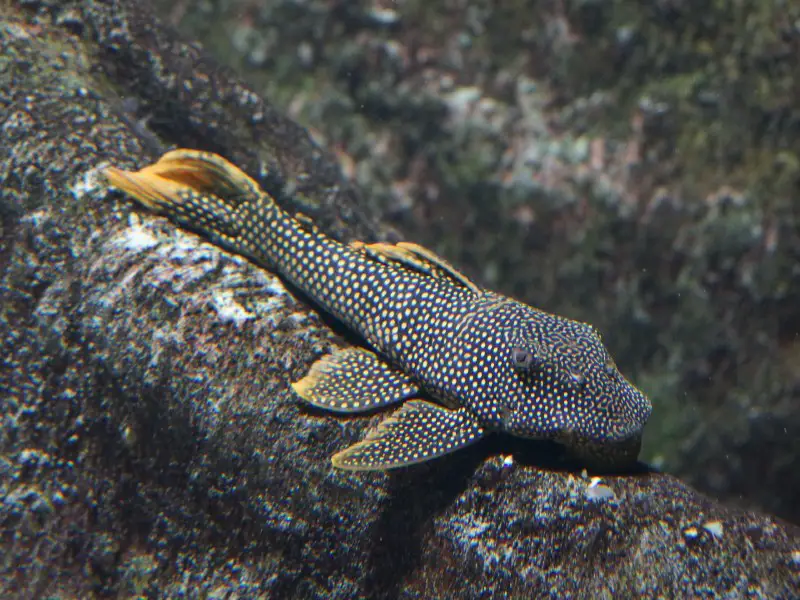
Rubber lip plecos are algae-eating catfish that are very easy to get along with. There is a huge range of freshwater fish that are happy to co-exist with plecos. Here is a list of fish that will live happily in a tank with rubber lip pleco along with some useful information about each species.
Most freshwater fishkeeping hobbyists have either kept zebra danio in their fish tank or know a lot about them. These are friendly fish that are easy to breed and even easier to care for. You can keep about five zebra danio in a 15-gallon fish tank, so you can imagine how many fun-loving danios you can have in a larger pleco tank.
- Tetras
Tetras are schooling fish that are very active and lively. They are brilliant fish in community fish tanks as they love to live peacefully and calmly.
You should keep a minimum of six tetra fish in your aquarium at a time and preferably more. Tetras of the same species like to be kept together, and responsible fishkeepers should ensure that there are plenty of tetras in the tank together to keep their spirits high.
There is a slight resemblance between cory catfish and rubber lip pleco. Cory catfish are also bottom-feeding scavengers that are great at cleaning and maintaining the aquarium.
You will be surprised to learn that you can keep between five and eight cory catfish together in a standard fish tank. It isn’t a good idea to have quite this many in an aquarium with rubber lip pleco, but if you love bottom-feeding fish, pleco and cory catfish are a match made in heaven.
- Bala Shark
Bala shark isn’t the kind of shark that you might expect. These fish will grow to a maximum length of 14 inches, so as you can see, they stay rather small.
Young Bala sharks are very peaceful, but they develop an appetite for small fish as they get older. You won’t want to keep Bala sharks with fish species like the zebra danio or similar fish.
Male gouramis are aggressive towards one another, so if you want to keep the mood in the fish tank mellow, I suggest keeping a couple of females in the tank instead. Gouramis are great tank mates for rubber lip plecos because they like to be paired with other slow-moving fish. Keep gouramis away from fin nippers and hyperactive fish.
As a rule, you should avoid keeping rubber lip plecos with other bottom-feeding fish as they get very territorial and frustrated with other similar fish in their space. You might be able to get away with keeping another species of bottom-feeder in your aquarium if the tank is particularly large and each fish has enough room to establish its own territory.
Aggressive cichlids and tiger barbs are a big no-no in a tank with rubber lip plecos. Plecos like to keep the peace and don’t appreciate having other fish bullying them. Rubber lip pleco won’t fight back, so keeping an aggressive fish species in the tank with them could lead them to get seriously injured.
Can You Keep Rubber Lip Pleco Together?
As we established earlier, you can keep rubber lip pleco together, but only when the aquarium is big enough for them. Keep a maximum of two or three rubber lip pleco fish together to avoid conflict.
Diet
Rubber lip plecos are not fussy eaters, and more often than not, they will eat anything that sinks to the bottom of the tank. These fish don’t need much meaty food in their diet, so if you are already feeding other fish in the tank shrimp, you don’t need to add extra for your pleco as it is likely eating their leftovers.
Feeding rubber lip plecos a rich diet of algae and vegetables is important. You can add bits of zucchini, peas, green beans, and spinach to the tank for your fish to graze on to ensure they have a healthy balanced diet.
Avoid feeding plecos every day. I suggest feeding them six days out of the week and letting them fast for one. Don’t feed them treats every day; otherwise, they will fill themselves up with treats and won’t eat anything else.
Care
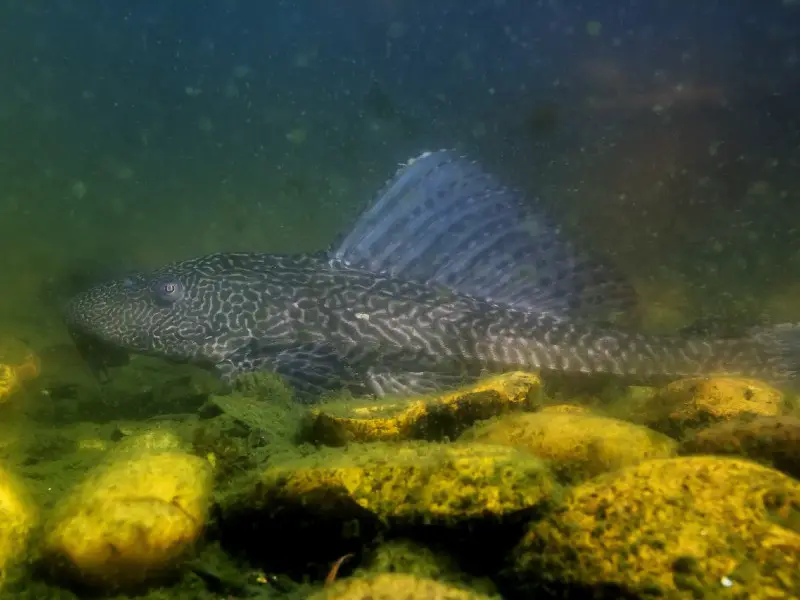
Rubber lip plecos are a very healthy fish overall. They aren’t prone to any illnesses in particular, and as long as the tank is kept clean, you shouldn’t run into any problems.
Maintaining regular water changes and keeping up with your tank maintenance schedule is vital to avoid bacterial infections. Another thing to look out for is drastic changes in the salinity levels in the water. Scaleless fish are very sensitive to the levels of salt in the water, so be careful when adding salts to treat infections.
When choosing a substrate for the aquarium, go for soft, smooth pebbles over gravel and rough sand. This is so that the fish don’t damage their bellies or fins while they scavenge for food at the bottom of the aquarium.
Keep plastic plants to a minimum and try to fill the tank up with as many real plants as possible. This gives your fish plenty of corners to scavenge in and hiding spots for when they want to rest.
Breeding
If you have your hopes pinned on being able to breed rubber lip pleco in your home aquarium, then I’m sorry to disappoint you. These fish are very hard to breed, so much so that most immature fish that are sold in stores have been caught in the wild.
These fish need incredibly comfortable conditions and a huge tank to ‘get in the mood. Rubber lip pleco will only breed in a tank that is larger than 300 or more gallons, which is much larger than most home aquariums.
Are Rubber Lip Pleco Suitable for Your Aquarium?
As long as you have a very calm and mellow aquarium, then your fish will be extremely happy in the tank. Try to keep them separate from other bottom-feeding breeds if possible, so when you are looking for the perfect tank mate for your pleco, swaying towards small, speedy fish that stay away from the substrate is wise.
Due to their incredibly long life expectancy of up to a whopping 15 years, the most important thing to consider before introducing one into your aquarium is how serious you are about fishkeeping. Rubber lip plecos are great for people who have kept aquariums for many years and know they will keep them for many more to come.
Rubber lip plecos are ideal for plant aquariums, and they don’t need to be paired with other fish at all. If you have a passion for freshwater aquarium plants, then letting a little rubber lip pleco maintain your aquarium could liven the tank up a bit too.
When it comes down to it, the rubber lip pleco is a very easy-going fish that can adapt to many tank conditions and circumstances, and there is very little reason why one of these cuties can’t thrive in your existing tank. So the important thing is assessing whether you can maintain the fish for so many years and commit to keeping an aquarium suitable for plecos for such a long time.
I hope that this article helped you understand rubber lip plecos. Will you be introducing one into your aquarium?

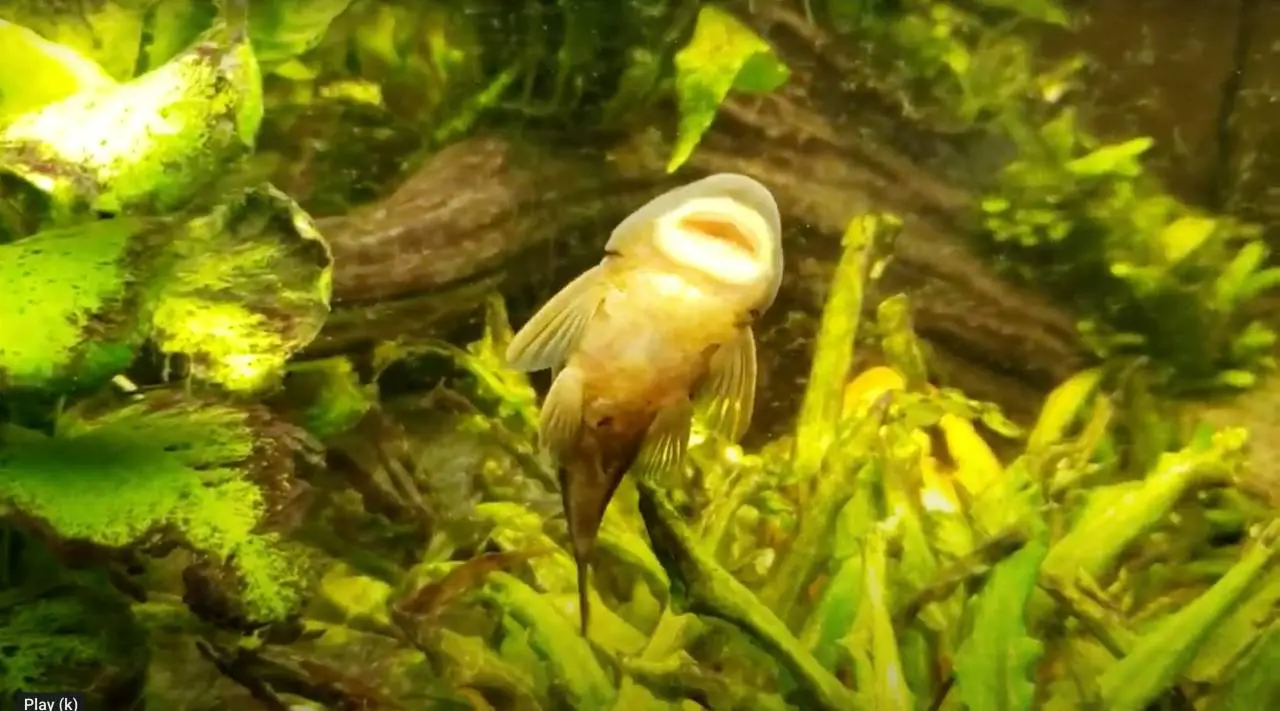
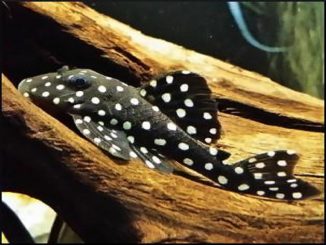
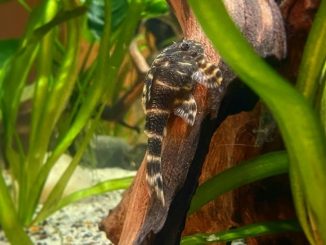
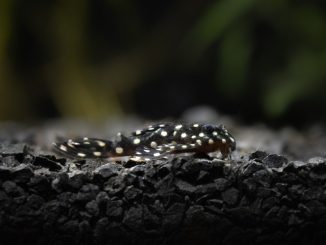
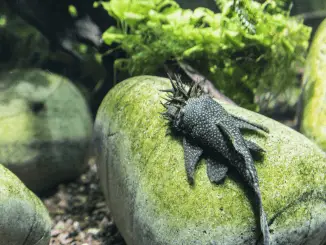
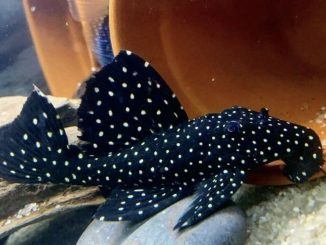
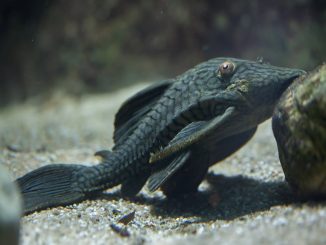
My rubber nosed plecos have had 3 sets of eggs fertilized but there’s 20 – 30 eggs per spawn, currently I have 17 young plecos growing